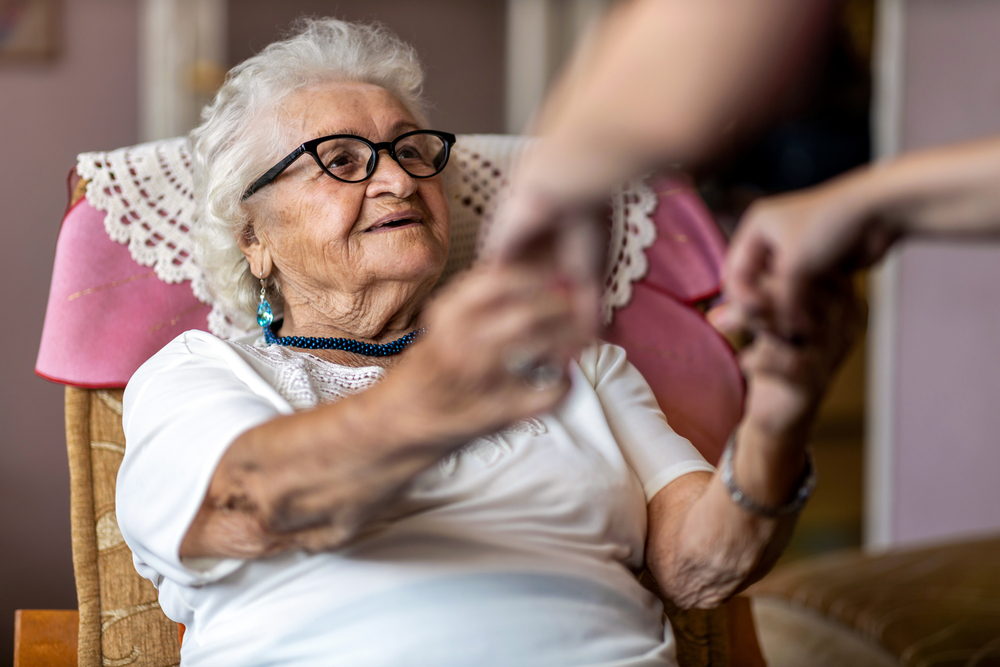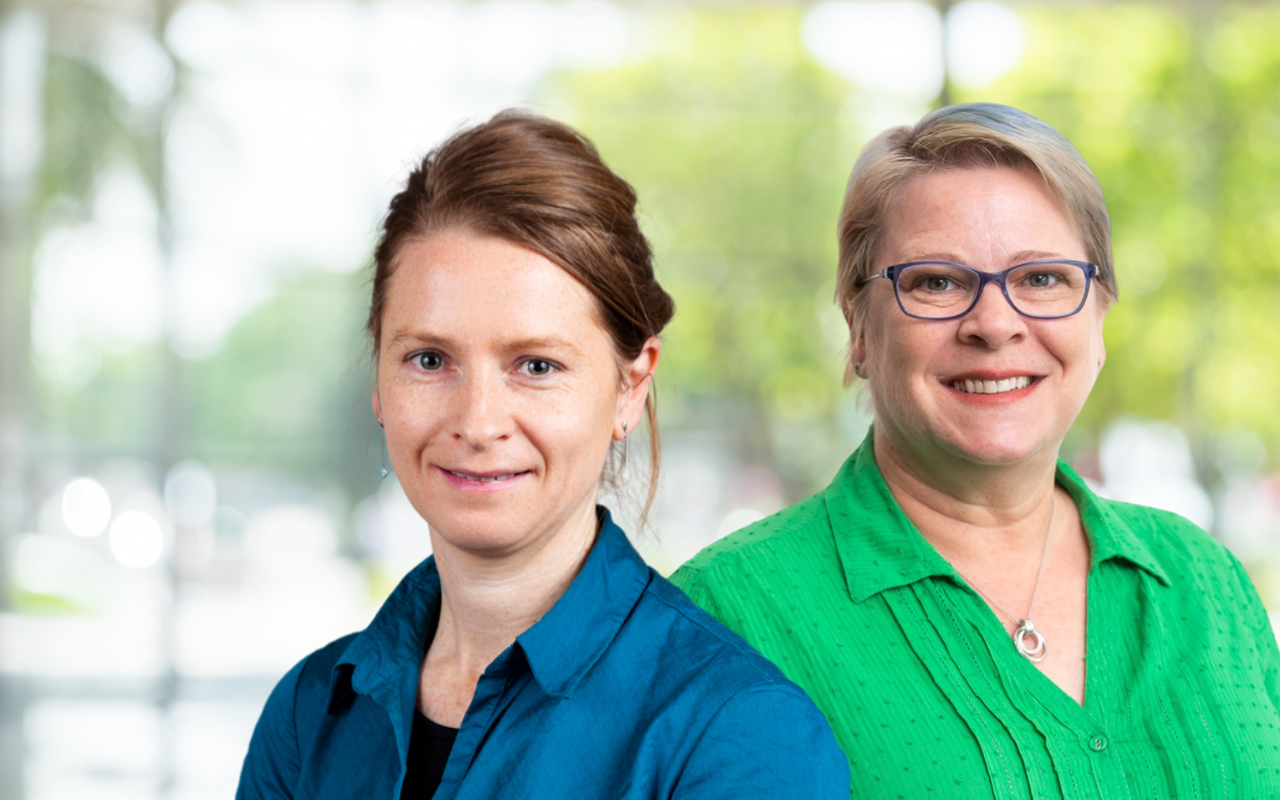Recognising and embracing the linguistic diversity of people receiving aged care in Australia is critical for high quality treatment and care, write Dr Monica O’Dwyer and Dr Meg Polacsek.
With great diversity in Australia’s population, health care services are increasingly supporting patients from culturally and linguistically diverse backgrounds. Whatever the setting, high quality support depends on the ability of health professionals and those seeking support to engage effectively. However, the setting in which this is arguably most challenging is aged care.
Ageing is a complex and often challenging experience, and older people from non-English speaking countries are likely to experience challenges accessing and receiving aged care. In Australia, most aged care services are provided in the community (ie, in people’s homes). However, the bulk of government funding goes into residential aged care, which provides high intensity support and care for those who can no longer live independently.
Consistent with Australia’s migration patterns, a growing number of people living in residential aged care were born in a country where English was not the dominant language and have a preferred language other than English. Despite a clear expectation that services and support accommodate the cultural and linguistic diversity among aged care residents (eg, the Aged Care Diversity Framework and the report of the Royal Commission into Aged Care Quality and Safety), there are significant gaps in how residents with diverse needs and preferences are supported.
Overall, residents who are born in non-English speaking countries may have higher needs for functional, behavioural and complex care. Low English proficiency, a common barrier to timely and appropriate support, has broader implications for positive health outcomes and is strongly associated with feelings of loneliness and social isolation. Cross-cultural communication challenges with staff, in particular, have a deleterious effect on the health, wellbeing and quality of life of older adults who prefer to speak a language other than English. In addition to language barriers, available aged care services may not be culturally appropriate, or may fail to meet the person’s needs. Particularly vulnerable are those living with dementia.

The extent of language diversity in aged care
In order to address these gaps in policy and practice, we need to better understand the extent of language diversity of aged care residents.
We undertook a secondary analysis of 2020–21 data from the Australian Institute of Health and Welfare (AIHW) National Aged Care Data Clearinghouse to identify the country of birth and preferred language of older adults living in residential aged care in Australia. Our findings were published in the Australasian Journal on Ageing in January 2024.
Our analysis identified the number of speakers of the top 20 preferred languages and sole speakers of a language in their facility, by state or territory. We distinguished between residents who were born in a main English-speaking country (such as Australia, the United Kingdom, the United States, Canada or New Zealand) and a non-main English-speaking country. However, we caution against assuming that a particular country of birth necessarily indicates language preference: people born in a main English-speaking country may prefer to speak a language other than English, while those born in a non-main English-speaking country may speak English as a first language. We also note limitations in our analysis due to missing or inconsistent data.
Through our analysis, we identified that permanent aged care residents represented 185 different countries and 80 language preferences. Of those, the 20% of residents who were born in a non-main English-speaking country would make up the entire population of, for example, Wangaratta (Victoria), Griffith (New South Wales) or Gympie (Queensland). Consistent with country of birth, patterns of migration and ageing in Australia, the most preferred languages other than English were Italian, Greek and Cantonese.
These speakers comprised half of all residents with a preferred language other than English. Looking further down the list, more than 500 residents spoke one of the top 12 languages other than English. One-fifth of those who spoke one of the 20 most preferred languages was the only person speaking that language in their facility. These numbers highlight the importance of culturally competent aged care.
Creating culturally appropriate care
In addition to language, person-centred care requires a clear understanding of a person’s cultural context. For example, there can be significant regional linguistic differences – including dialects – of the same language. Similarly, speakers of one language may come from culturally and linguistically diverse countries. As a result, even residents who share a language preference could be at risk of social isolation.
It is important to note that ethno-specific aged care is not necessarily the answer. Over the years, different studies have revealed contrasting findings on the extent to which ethno-specific and/or mainstream services can meet the cultural and linguistic needs of residents. Further, even if there is a preference for ethno-specific care, this is often not available to the majority of older people.
So, where does it leave us? The bottom line is that holistic and culturally appropriate care for linguistically diverse populations requires significant investment and innovation. We need to recognise and better support families of non-English speaking residents and facilitate cross-community and cross-facility cultural and linguistic connections.
We must continue building the capacity of aged care staff and leverage their cultural and linguistic skills more effectively. It is also crucial that we collect consistent and timely data on the cultural and linguistic backgrounds of both residents and staff and use that knowledge to optimise care. This information could be used more broadly to inform the ways of sharing multilingual care workers in the same region. The use of interpreters is an option, albeit less immediate.
Finally, investment and innovation must be based on robust data and clear evidence. Our work is one small step in that direction.
Dr Monica O’Dwyer is a Research Fellow at the Monash Centre for Occupational and Environmental Health, Monash University.
Dr Meg Polacsek is Communications, Advocacy and Grants Manager at the Australian Association of Gerontology.
This research was conducted in collaboration with colleagues Nikolaus Rittinghausen and Lisa Tribuzio at the Centre for Cultural Diversity in Ageing and Tabitha Porter.
The statements or opinions expressed in this article reflect the views of the authors and do not necessarily represent the official policy of the AMA, the MJA or InSight+ unless so stated.
Subscribe to the free InSight+ weekly newsletter here. It is available to all readers, not just registered medical practitioners.
If you would like to submit an article for consideration, send a Word version to mjainsight-editor@ampco.com.au.

 more_vert
more_vert
One resource that is often under-used in aged care is friends and rellies. This bucket often contains aspiring helpers who may think their offers may not be welcomed, but may, if encouraged, be adequate translators.
I believe there’ve been a number of investigations (some non-academic) in past years that has focused on identifying and supporting older people from diverse backgrounds who need care and worker/volunteers who provide that care.
Linguistic diversity needs to stop focusing on only language of older people who came from overseas. We need to include AUSLAN and similar, as well as our First Nations people if we’re going to talk about language diversity. And we need to read diversity in terms of ethnicity and birthplace and choice of language that the older person prefers as they age. Some older people now and in future have complex migrant histories. We don’t simply come from one place. We may come from more than one or identify with some other place due to one’s migration pattern.
We need to focus on competent care, and care that is respectful of difference.
I agree with the authors that linguistics skills are necessary in Healthcare in all environments. In aged care, we still continue to see older and elderly residents with little or no English.
Some due to dementia, or medication side effects, where 2nd language is more easily forgotten, but they retain their mother tongue. Others as they did not take time to learn, especially some of the women. They may rely on family, but often children, and grandchildren do not learn other languages, or do what is colloquially called “kitchen version of language skills”.
However, we have to accept that in multicultural country as ours, we will never have all languages spoken, so we need interpreting services.
These need ongoing funding via virtual means especially zoom virtual linkups, not just phone.
We must use such, as opposed to using staff with uncertain linguistic skills, and who may not be prepared to talk about bad news, consenting for complications, etc etc
Having come from CALD refugee background, I am still working on training staff to discuss DNR or other issues. It is also difficult until you understand the language to ensure correct information is being interpreted.
Lots of issues, but the solutions need to be:
Language proficiency testing at primary school and teaching languages in language centres(online for schools),
A culture of language learning, I speak fluently 2, but have an ability to communicate with many ethnic groups through Slavic lingua similarities, and have 2 more basic patients skills, yet speak 5 others basic colloquial skills,
Continue to support telephone and virtual interpreting centre’s,
Encourage staff to learn basics in aged care for certain ethnic groups eg Italian or Greek facilities.
If this becomes reality, we may see improvements.
Often older people who migrated as adults and learned English as adults revert to their original language as they get older and their English proficiency deteriorates.
In NZ there is a Dutch aged care facility made to look like a Dutch village 50 years ago and the language used is Dutch. It apparently works well.